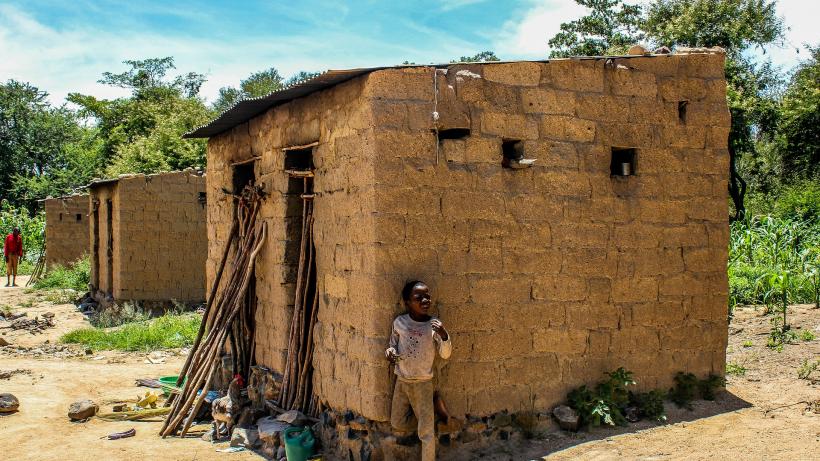
Poverty eradication in Mozambique: Progress and challenges amid COVID-19
Poverty has improved over the past 20 years; however, the COVID-19 pandemic jeopardises the gains achieved, pushing people into extreme poverty.
Mozambique achieved independence in 1975, but it was only after the end of the civil war in 1992 that it began to experience some economic progress. The number of people living in poverty in 1996-97 was about 12 million, representing 69.7% of the total population. From 1996-97 to 2014-15, despite a reduction in poverty rates from 69.7% to 46.1%, the population increased by more than 50% in the same period. This meant that the number of people in poverty was approximately the same as at the beginning of 1996.
Over the last five years, there was an increase in poverty rates, especially in rural areas, due to a crisis generated by decreasing foreign direct investment (FDI), natural disasters, and military attacks in the north and centre of Mozambique. There was also the discovery of ‘hidden debts’ incurred by the Government between 2013 and 2014, which led to the retraction of foreign aid, currency depreciation, food price spikes, and a reduction in household consumption. According to the Ministry of Economy and Finance, from 2015 to 2019, the number of Mozambicans living in extreme poverty have increased by 55 to 60%, which corresponds to 16.7 to 18.2 million people.
Graph 1: Poverty in Mozambique: 1996-97 to 2014-15
 Source: IOF, 2014-15; Ministry of Economics and Finance, 2019
Source: IOF, 2014-15; Ministry of Economics and Finance, 2019
Public policies for poverty eradication: Towards inclusive growth
In Mozambique, it is practically impossible to dissociate public policies for the eradication of poverty from foreign policy, especially with regard to foreign assistance. In December 1999, the World Bank and International Monetary Fund (IMF) approved a new approach - the Poverty Reduction Strategy Paper (PRSP) – which allowed low-income countries, such as Mozambique, to prepare their own poverty eradication strategies.
Mozambique embarked on the preparation of the PRSP, which took on the name of PARPA. This saw the production of PARPA I (2001-2006), PARPA II (2006-2009), and the Poverty Reduction Action Plan (PARP) (2011-2014). From 2014 until now, Mozambique has not had a specific policy for poverty eradication, instead directing its efforts towards poverty reduction through the Operational Matrix of the Government's Five-Year Programme (PQG).
Despite a strong growth trajectory during the years since 2000, and a moderate decline in poverty rates as a result of these policies, growth gains have not been well distributed, and inequality is slowly becoming a structural problem. The gap between rural and urban areas is large and persistent - if not likely to get worse. Living conditions in southern Mozambique are much better than in other regions (partly due to a higher level of urbanisation in the south).
Inclusive poverty reduction can be achieved with policies that increase access to basic quality services, such as education, health, sanitation, electricity, as well as access to labour markets and means of production. Furthermore, diversifying the economy to mitigate the impact of external shocks, increasing productivity in agriculture, developing insurance markets to mitigate the risks associated with natural disasters, and eradicating military attacks from different groups is key. Such efforts would generate more inclusive growth, build resilience, and create fiscal buffers to reduce poverty in Mozambique.
Challenges imposed by COVID-19 in Mozambique
The COVID-19 pandemic has challenged the growth prospects of many countries, including Mozambique. Indeed, the response policies adopted by government are (or were) decisive for, on one hand, minimising the levels of contagion and, on the other hand, minimising the potential negative effects of these measures on the economy.
The prompt reaction of the Mozambican Government, through the imposition of bold restrictions, even before the confirmation of the first case, helped to delay the rapid spread of the virus compared to other countries. However, these measures negatively affected the economy, in the following terms:
- A 3% reduction in economic activity, with a reduction in the turnover of companies by 20%, by May 2020. This saw a decline in the tourism sector by 87%, industry by 20%, and trade by 19.1%.
- A reduction in the employment rate by 7.8%, namely for people working in tourism (21.9%) and industry (12.4%).
While the risks associated with falling macroeconomic indicators - such as GDP, FDI, and fiscal revenue - could push more Mozambicans below the poverty line in the coming years. The effective response of limiting the number of cases (330 per 1 million people) and deaths (3 per 1 million) cleared the horizon for a recovery in 2021 for now, where economic growth is projected to increase from 0.8% to 2.1%, compared to 2020.

